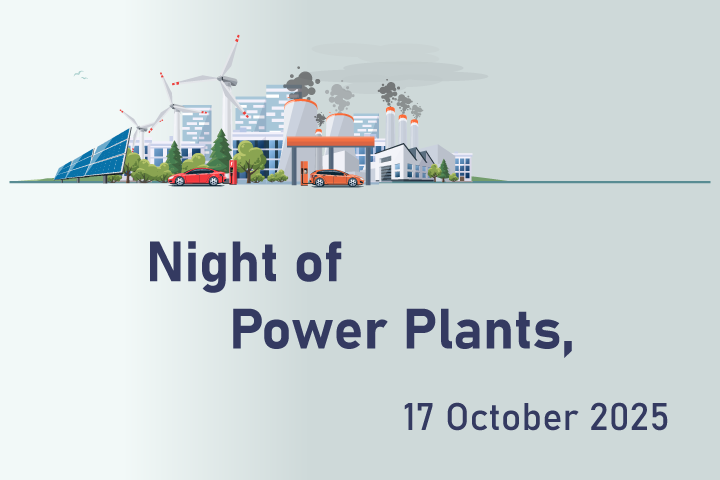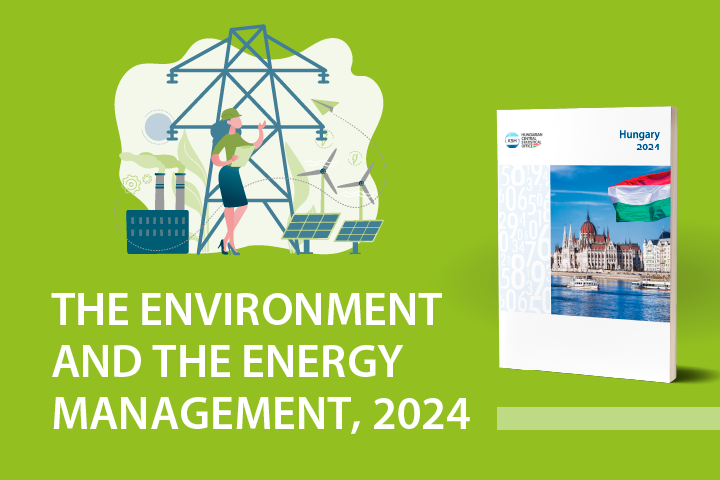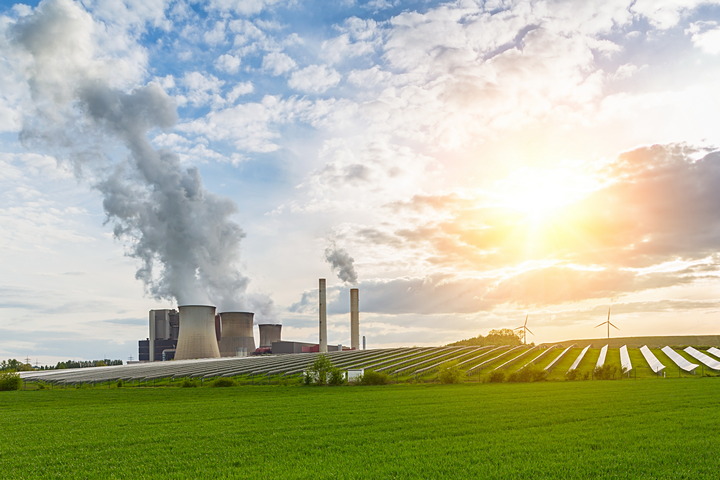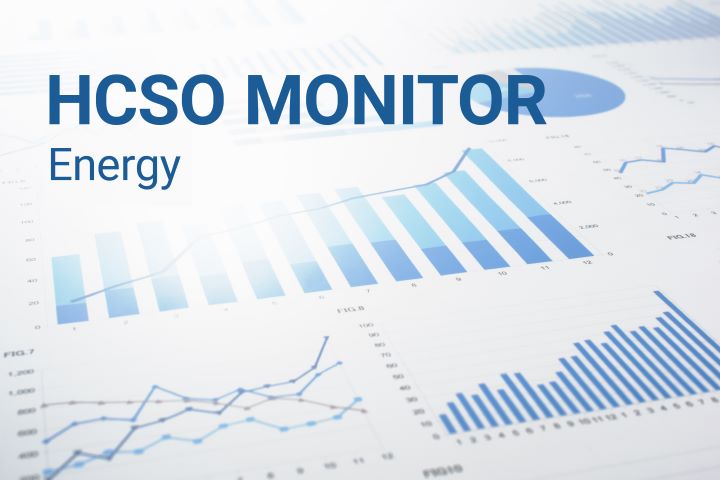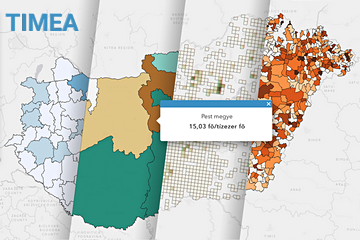Energy
The aim of energy management is to supply energy, vital to the society and the economy, to the different sectors of use. Energy management statistics include statistics on energy production and use, the energy balance, the security of supply, the energy market, energy trade, energy efficiency and renewable energy sources.
Key figures
Production of primary energy carriers
Indicator description
Volume of production of primary energy carriers (coal, petroleum, natural gas, by-products of petroleum and natural gas extraction, atomic energy, biogas, biomass, municipal and industrial waste, biofuel and solar, wind, hydro and geothermal energy), expressed in heat value (petajoules).
Source of data:
Summary Tables (STADAT)
Last data for period: 2024
Final energy use
Indicator description
Volume of energy actually used by consumers, expressed in petajoules.
Source of data:
Summary Tables (STADAT)
Last data for period: 2023
Share of electricity produced from renewable energy sources and waste
Indicator description
Renewables-based electricity production expressed in heat value (petajoules), as a share of energy production.
Source of data:
Summary Tables (STADAT)
Last data for period: 2024
Primary energy use
Indicator description
Use of primary energy carriers (coal, petroleum, natural gas, by-products of petroleum and natural gas extraction, atomic energy, biogas, biomass, municipal and industrial waste, biofuel and solar, wind, hydro and geothermal energy), expressed in heat value (petajoules).
Source of data:
Summary Tables (STADAT)
Last data for period: 2024
Featured
Hungary 1st semester of 2025 – Diverging economic impacts
The performance of Hungary’s economy was identical with the one of the same period of the previous year. The increasing performance of the services sector and consumption growth had a positive impact on GDP. These impacts however have been eliminated by the setback of the industry and agriculture, the continuously subdued investment activity and the deterioration in the balance of the external trade in goods. Retail trade volume continued to rise, tourism nights spent at accommodation establishments also increased in number.
Night of Power Plants, 17 October 2025
The Hungarian Energy and Public Utility Regulatory Authority will hold the Night of Power Plants on 17 October this year. Interested people can have a look into the world of energy suppliers and public utility companies at more than 80 venues throughout the country. Fossil sources have continuously declined in importance in Hungary in the last decades, while renewables-based electricity production grew to a record level, 11.6 billion kilowatt hours in 2024. Solar energy in Hungary (9.0 billion kWh) has an outstanding role even at an international level, having ensured over three-quarters of green electricity last year.
Statistical Yearbook of Hungary, 2024
The yearbook provides an overview of Hungary's demographic, social and economic trends, environmental characteristics and their changes over time, with the help of tens of thousands of data in some 500 tables, charts and maps. In the chapter devoted to earnings and incomes, it is a novelty compared to previous years that net earnings in which allowances and types of exemptions are accounted for, too, came into focus from 2019. In the number of employees, people working in working time shorter than 60 working hours per month are also taken into account. In addition, the theme of environment is completed with areas declared world heritage sites by UNESCO.
Yearbooks, pocketbooks, data repositories
A new sub-page has been added to the HCSO website, more than 400 yearbooks, pocketbooks and data collections, a total of a hundred thousand pdf format pages close to 150 thousand excel tables and several thousand static and interactive graphs and maps are available for download. The sub-page offers the possibility of filtering these yearbooks, pocketbooks and data collections by reference year, serial name, format (PDF, XLS) and supplements (graphs, maps). Users may compile their own list of publications based on the year- and pocketbooks, data collections, adequate to their interests.
Hungary 2024 – The Environment and the Energy Management
Our series of infographics, based on the most important data from the Hungarian-language publication Hungary, 2024 provides a comprehensive picture of the social and economic state of our country and the main characteristics of our environment. The last infographic in the series presents the main data of the environment and energy management. The English extract from the publication is available here: Hungary, 2024, and the full Hungarian-language version here: Magyarország, 2024.
Hungary, 2024
Hungary’s GDP increased by 0.5% amid global challenges in 2024. The performance of goods-producing industries lessened, while that of service-providing ones rose, which shows the duality of economic trends. Household consumption picked up, which was considerably encouraged by the purchasing power of earnings growing again with the inflationary wave calming down. Besides, the data series reveal that the level of employment reached another peak.
Solar energy
The importance and popularity of solar electricity production grows year by year. It made up already one-third of all electricity produced in Hungary in June 2024. The capacity of solar power systems per inhabitant was the highest in Southern Great Plain, in districts around Lake Balaton and in agglomerations of large towns at the end of 2023. By contrast, it was the lowest in districts of the capital city, in less developed areas along the national boundary as well as in the inner periphery of the Central Tisza Region.
Hungary’s energy consumption down by 16% in March 2023
Hungary’s energy needs were lower each month from April 2022 than a year earlier, and decreased at rates higher than 10% from September 2022 to March 2023 – except for February. The use fell by 16% this March, partly owing to the lower industrial output then than in the same month of the previous year and to the milder-than-usual weather. Energy consumption was 15% lower in the first three months of 2023 as a whole than in the corresponding period of 2022.
Related themes
Methodological information
Dissemination database ( infra-annual data annual data ) |
Latest update | Next update |
|---|---|---|
Energy balances | ||
| Consolidated primary energy balance | 23/12/2025 | – |
| Key indicators of Physical Energy Flow Accounts (PEFA) | 13/02/2025 | 23/12/2025 |
| Consolidated primary energy balance | 07/06/2023 | – |

